
Endangered species of the world. Hardly a day goes by or we talk about only one endangered species of the world: humans. It’s as if the pandemic totally closed us off from the rest of the world.
Biodiversity declines at an unmatched rate. Only fundamental changes can protect the 1.000.000 endangered plant and animal species of the world. Vested interests must be overturned.
We tend to forget that the survival of species, including us humans, depends on the ecosystems in which biosystems live. The most vulnerable species are threatened the most severely. This includes all of the poorest humans who live on this planet.
Some of the links are affiliate links. As an affiliate associate, we earn a commission when you purchase any of the products offered through the shared links at no extra cost for you. This helps us maintain this website.
Table of contents
Unlimited consumer needs
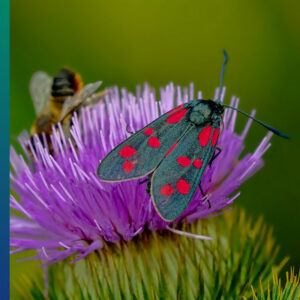
The loss of biodiversity is directly related to human activity. There are five human activities that drive this loss:
- Changes in land and sea use;
- Direct exploitation of organisms (e.g. fish, poultry, pigs, cows, horses);
- Climate change;
- Pollution;
- Invasive alien species.
These changes are directly caused by population growth, exorbitant consumption patterns, technological failures, abuse of governance, and a total lack of accountability. These changes are boosted by resource depletion at one end of the planet and serving the unlimited needs of consumers on the other end.
How to value ecosystems
Economic, social, political, and technological changes are required to restore ecosystems and biodiversity. One of the options is that we start to value our ecosystems and charge the products we buy with an ecosystem tax.
This means that you have to pay for the restoration and maintenance of biodiversity and ecosystems. Of course, the question is how this can work. All kinds of questions arise. What are ecosystems? How to value these systems? And even more complicated, how to charge the value of ecosystems to those who use these systems?
A very simple example illustrates how difficult these questions are. Water is of tremendous value. However, who possesses the water? Take a farmer who has a well on his farmland. The water of the well originates deep in the ground beneath the land of his neighboring farming colleague. His neighbor could empty the well by simply pumping it up from beneath his own ground. Who’s entitled to the water?
Related: Global Biodiversity Dictates the Quality of Our Life
The value of water
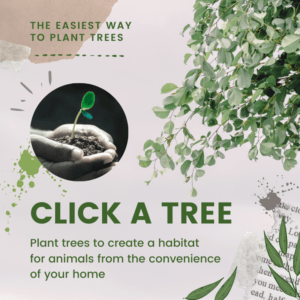
We need some 50 – 70 liters of water each day. Drinking and cooking are the most basic types of water use. We use water to clean ourselves, our clothes, the house, and the car.
What we usually do not take into account, is that the production of our food and our waste disposal also needs substantial amounts of water. There are enormous differences between the water people use around the world.
In the USA people use on average 600 liters of water each day. In Africa, people are already very happy when they have 20 liters per day at their disposal.
Another use of water we tend to ignore is for the production of, for instance, the cotton t-shirt we wear (2,900 liters for one shirt), for the steak we eat (15,500 liters for a kilogram of beef), and for the sugar we use (1,500 liters per kilogram of cane sugar).
The value of ancestral knowledge
In the 1980s the Sahel desert in Africa got the chance to spread out due to years of drought. Nothing would grow on the dry hard, yet fertile, land. Thousands of people died of starvation. Many more fled.
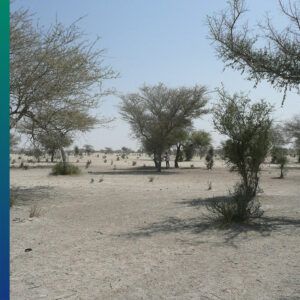
The only solution was natural regeneration. This meant that grassland and trees had to be restored before it was possible to use the fertile lands again for agriculture. Trees offer shadow and together with grass they protect against the dry desert winds. Two ancestral techniques were applied to restore land use in a natural way.
The trees are grown in so-called pits, a plant hole. The hole is filled with manure. The manure attracts insects, which process the manure. This makes it easier for the trees to collect the nutrients from the soil and take root. The insects dig tunnels that operate as irrigation channels.
The second technique was even more simple: rows of stones forming terraces. The stones stop rainwater from running away too quickly. Every drop is saved. Moreover, the soil sticks between the stones. Offering food for grass and trees. These start small, but even small plants help to absorb any rain in the soil.
How to protect the endangered species of the world?
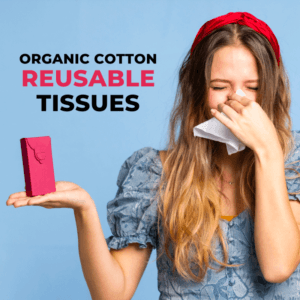
Farmers in the Andes need grasslands for their cattle. However, after intense grazing, the soil becomes dry and loses its ability to sequester water. The danger of erosion is substantial. Threatening the subsistence of the farmers.
Trees are the solution. However, only one tree in the world grows between 3.200 and 4.600 meters: the polylepis. Fortunately, the polylepis is an indigenous tree in the Andes mountains of South-America.
The farmers experience that after the trees are planted, the entire water household improves. Erosion stops. An abundant amount of grass grows between the trees, which also helps to sequester water. The villages down in the valleys are also happy because the water comes down the mountain in a far more steady flow.
This type of natural regeneration project has yet another substantial benefit. Biodiversity restores. The original vegetation comes back. Slowly, but gradually also the animals return, in this case: pumas, deer, bears, and condors.
Collective action
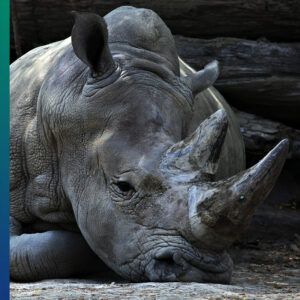
The economy is about money. That’s what most of us assume. However, this is only partly true, as Elinor Ostrom proved. She discovered that people want to work together when they discover that their concerns are jeopardized by their own collective actions.
Fishing grounds, pasture land, rain forests, lakes, rivers, layers of water in the ground, when these common concerns are at stake, through common ownership they can be restored when need be and maintained.
People use a complex set of rules, norms, and penalties to control the common goods they collectively share. However, this works best when people live together in a community and have a common concern.
Related: Citizens Devoted to the Conservation of Biodiversity
Let’s cherish the beauty of biodiversity
Of course, clean air and water are common concerns we all share. What lacks, however, are strict rules and norms. Moreover, how to penalize someone who throws away an empty plastic bottle? And where there is one plastic bottle, many more show up pretty quickly.

The most intriguing challenge to protect the endangered species of the world is to curb indifferent attitudes. To try this through information campaigns that discourage our long-standing and habitual behaviors is an uphill fight.
We must seduce each other to discover what the benefits are of collective action. There are also many temptations in the beauty of nature, in the beauty of biodiversity, in the beauty of the world.
Related: Attract Wildlife to our Garden to Promote Biodiversity in a Diverting Way
The benefits of the protection of the endangered species of the world have, however, far more value in themselves. Let’s recognize this value, and invest together in actions to support these benefits.
How do you contribute to collective actions to protect the endangered species in the world? Please use the comment box below.

Hi Tom. Thank you for this extremely important article. This is so sad to realize that we are responsible for destroying thousands of species. The awareness of our destructive action is bigger than a decade or two before, but I’m not sure if it’s not too late to turn back from the road of destroying our planet. Yet we all need to try, limit our consumption and be more eco. We own this to the planet and to our children who will live in the world we created (or destroyed).
Hi Cogito,
When I look at the facebook-posts of many of my friends, they only talk about the pandemic. And not very profound by the way. Historical reflection or even reflection on their own behavior is scant.
They should know though that the source of the current pandemic is our behavior. When we destroy biodiversity, and poison air, water, and soil, what do people think happens? Yes, we die.
For me, all the bickering about the pandemic is nonsensical when we don’t reflect on the ulterior underlying causes. We do not only destroy our own immune systems, but we also destroy the immune systems of nature.
Not that long ago, however, I read a comment of a rather cynical philosopher/biologist who stated the opposite: viruses are nature’s immune system. Viruses destroy the destroyer. More positively formulated: viruses are nature’s defense system.
It’s like a war. And in war, the most vulnerable suffer the most. Thank Nature, we have viruses.
Thank you for your comment and compliments. For now, stay safe, stay healthy.
Regards,
Tom
Our society is one of consumption and even if politicians say things are changing and we are doing enough for the environment and plants and animals, that’s not the case. We are doing 10% of what we should be doing. Everyone should have one or more ways of protecting nature. The Government should encourage people to do this. Positive and negative encouragements (huge fines for people and especially companies) should be in place. Kids should learn about the endangered plants and animals in school and know what they can do to change things. Instead, we try to teach them a lot of things they may never use or forget in 2-3 years.
Hi Claudia,
Thank you for your comment.
We sometimes tend to overlook time as one of the big challenges facing us when it comes to the restoration and improvement of biodiversity.
Of course, it’s important we all make an effort to contribute to this restoration and improvement. It’s also important we try to make this effort now, at this very moment. And we should not waiver from this goal.
However, we talk about fundamental changes. Changes that take a substantial amount of time to show some results. Some 50 years ago the first global warnings appeared about the destruction of biodiversity. Since then, the destruction only and exponentially increased. Given the current political climate, no changes in this downward trend are to be expected.
Does this mean our efforts to contain and reverse this development are in vain? No. But more is needed. Let’s fight on.
For now, stay safe, stay healthy.
Regards,
Tom
“the cotton t-shirt we wear (2,900 liters for one shirt” – Really? Wow, that’s so disappointing for me. I wasn’t aware of that before. Thanks for sharing it with us.
My wife and I (with our dog) spend around 250-300 liters of water per day. Even that is too high, and the USA citizens use double. Did you write the amount per person or house?
We are the smartest species in the World, but we’re destroying everything. So, that “smart” isn’t always smart. We will have to completely change ourselves and really start taking care of this amazing planet.
Hi Petar,
The 600 liter of water use in the USA is the average use, per person, every day.
I don’t know who told you we’re the smartest species in the world, but I didn’t, as far as I’m aware. And I probably never will. When we really would be smart, we would have faired much better.
There’s one issue, which keeps interfering with us being smart: greed. Of course, there is more, such as religion and nationalism, but greed has the biggest impact because it’s on an individual level.
We can only change this through collective action. Now, try to arrange collective action under the slogan ‘Let’s erase greed (and religion and nationalism)’. You’ll be lucky to last through the day.
So, we’re not smart yet. And perhaps it’s best we never become smart because who knows what we come up with.
For now, thank you for your comment. Stay safe, stay healthy.
Regards,
Tom
Wow, Tom, I am speechless! Reading how much water people spend in the different countries leaves me speechless. Especially Africa is so hot, and people use so little amount of water. I read decades ago about a white farmer who grows roses close to the Equator, where little water supply is available, but temperatures are very high. This farmer uses up all the water for his roses. African tribes living close to his farm had sometimes just a bowl of muddy water left for themselves for a day. I thought, how is it possible that nobody is stopping him? And how is it possible that he doesn’t see the need of these people? I haven’t read about him anymore and forgot about this farmer, but reading your post, he comes to my mind again.
When we see what big companies are doing to the Amazonas, I could cry. There are so many beautiful people living in villages, completely integrated into nature; they are threatened to lose their ground, even many activists around the world are fighting with them for their birthright. There is such great biodiversity, animals, and plants you will never find somewhere else, and every day so many hectares of beautiful rainforests are disappearing. What a shame!
I hope that governments will stop these powerful greedy people from exploiting the earth for their money greed. But the most essential step is not buying these products, so they have to rethink their strategy, hopefully stopping this devasting exploitation. Luckily there are many organizations and activists worldwide standing up together and sewing them. 🙂 Great article again, Tom! 🙂
Hi Sylvia,
Many Dutch flower farmers left The Netherlands to grow flowers in Africa because this is much cheaper. Besides most countries in Africa do not apply the same strict environmental rules as they do in The Netherlands. Although the environmental rules in The Netherlands aren’t that strict at all.
But these farmers just don’t want any rules. Like most farmers, they only want to do what they please. So they steal the indigenous people’s water, poison their lands, and destroy their biodiversity. It’s not that these farmers are blind to the needs of the native inhabitants, they just don’t care. These farmers are just malicious.
Fortunately, more and more people, young and old, fight these malicious people. Shell has been beaten in court. Activist shareholders target the boards of multinationals. Governments are called to answer for their reluctance, also in court.
However, there is still a long way to go. As you stated earlier, it’s hopeful that more and more people collaborate, and seriously try to reverse the downward spiral.
Again I thank you for your comment and heartwarming compliments.
For now, stay safe, stay healthy.
Regards,
Tom